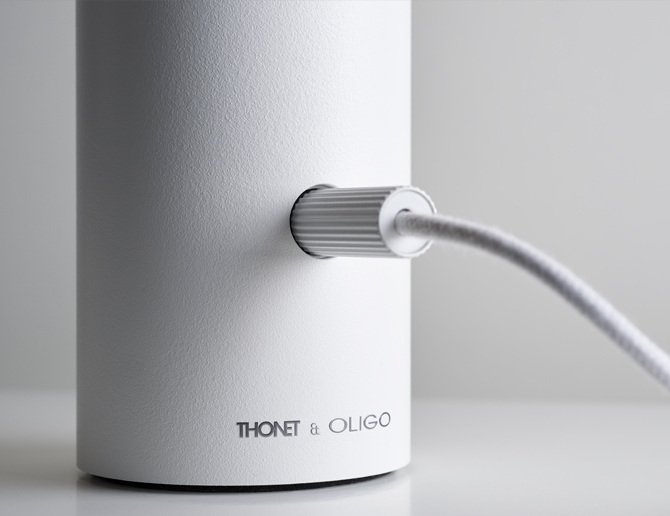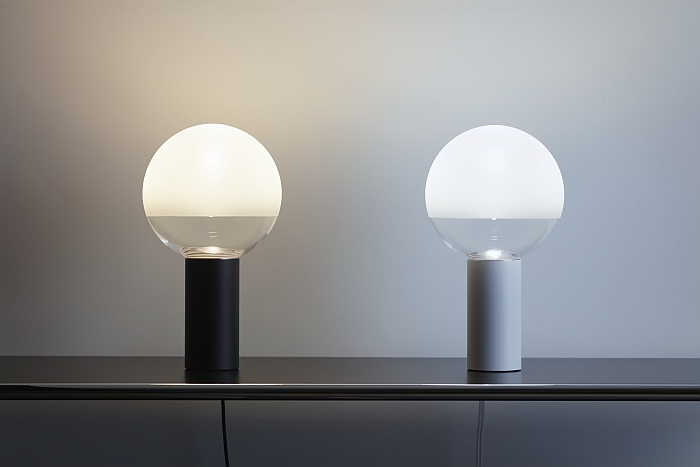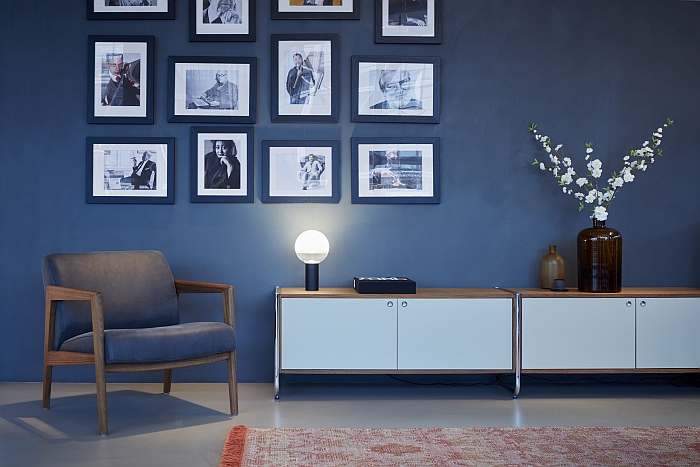In the famous Thonet Card Catalogue from 1930/31 the image of the B 9 side table and B 25 lounge chair is augmented by a small lamp atop the B 9.
Whereas the Thonet B 25 and Thonet B 9 are credited to Marcel Breuer, there is no credit for the lamp. But then it isn't a Thonet lamp. Thonet don't do lamps. Thonet do tables, chairs, shelving and other furniture. Thonet don't do lamps.
Or at least didn't.
In 2010 Thonet released the LUM reading lamp by Ulf Möller as a floor version, adding a desk version in 2015, in April 2015 came the pendant lamp Linon by Andrea Scholz and at IMM Cologne 2016 Thonet officially unveiled the latest addition to the Thonet lighting programme: the table lamp KUULA by Berlin based designer Uli Budde.
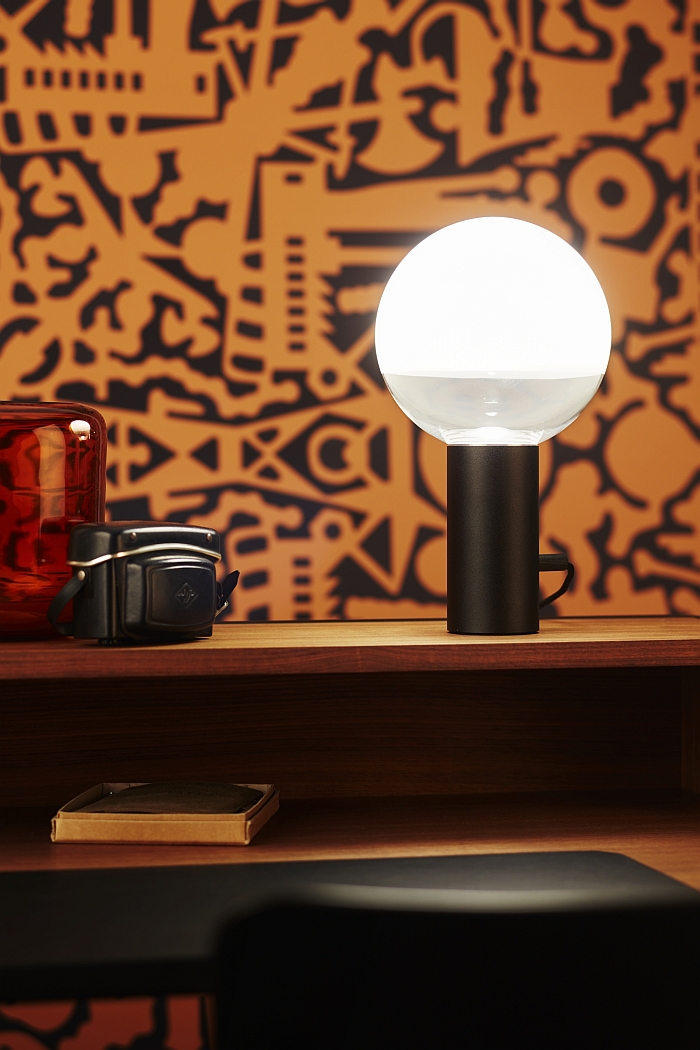
For us their is a delightful irony in the fact that Uli Budde is the designer. Not because Uli Budde can't design lights. He most definitely can. As he has proven with works such as Hazy Day for Marset or Balloon for Vertigo Bird. But because in our recent interview with Uli Budde he told us that, much as he enjoys the challenge and speed of technological change in contemporary lighting design and while he doesn't want to give up lighting design, he didn't "want to be considered just as a lighting designer"
It was however this experience as a lighting designer which led to the commission.
"We've been in contact with Uli for a three or year years without ever discussing concrete projects", explains Mirko Nordheim, Head of Product Development at Thonet, "normally when we start working with a designer I prefer to work on a side table, chairs are always judged subjectively, so do I find it comfortable, but with a table it's all about hard facts, size, weight, price and so you get to know one another and to learn to work together on a more rational basis. With Uli however I like a lot of his existing lighting designs and for all the ideas behind them, and so we decided to ask Uli to consider how a Bauhäusler would design a lamp today, something which could be a functional but also decorative Thonet lamp"
The question was posed at Milan 2014, Uli Budde, somewhat unsurprisingly, found the offer "fantastic" and accepted the challenge, but where does one start when developing a lamp according to such a brief?
"First of all I researched Bauhaus lamps", explains Uli Budde, "in general one associates Bauhaus with reduction, geometric forms and that was then where I stated. Clearly the first thought one has when one thinks about Bauhaus table lamps is the Wagenfeld Lamp and so that was then also an obvious starting point"
Was there, we venture, not a temptation to ignore what was already there, to avoid as it were the risk of being unduly influenced by existing objects?
"No, on the one hand Bauhaus is sill very relevant today and then on the other Bauhaus is so deeply burnt into our consciousness that ignoring Bauhaus wasn't an option", replies Uli Budde, "and so having researched the subject I decided to focus on trying to reduce the Wagenfeld design even further and to bring it more up-to-date through modern technology."
The result is a lamp which is as reduced formally as it is materially.
Formally KUULA is a lot less ornate, less cluttered, than Wilhelm Wagenfeld's lamp, much more reminiscent in many ways of Luciano Vistosi's mushroom-esque Onfale lamp from 1931, if less fragile, less ornamental. This uncluttered feeling is aided and abetted by the decision to do away with both an on/off and a dimmer switch; both functions being combined in and with the cable inlet, thus not only allowing for a more reduced form but also saving on material and production steps. A resource reduction enhanced by the sober aluminium base.
If there is a hint of luxury and of excess about KUULA it is without question the manually sand-blasted, mouth blown glass globe, a true piece of craftsmanship and the defining, visual, element of the lamp. The decision for sand blasting over other, potentially less involved, processes being made to ensure an exact edge between the opaque and clear sectors of the globe and thus highlight the contrast and maximise the effect.
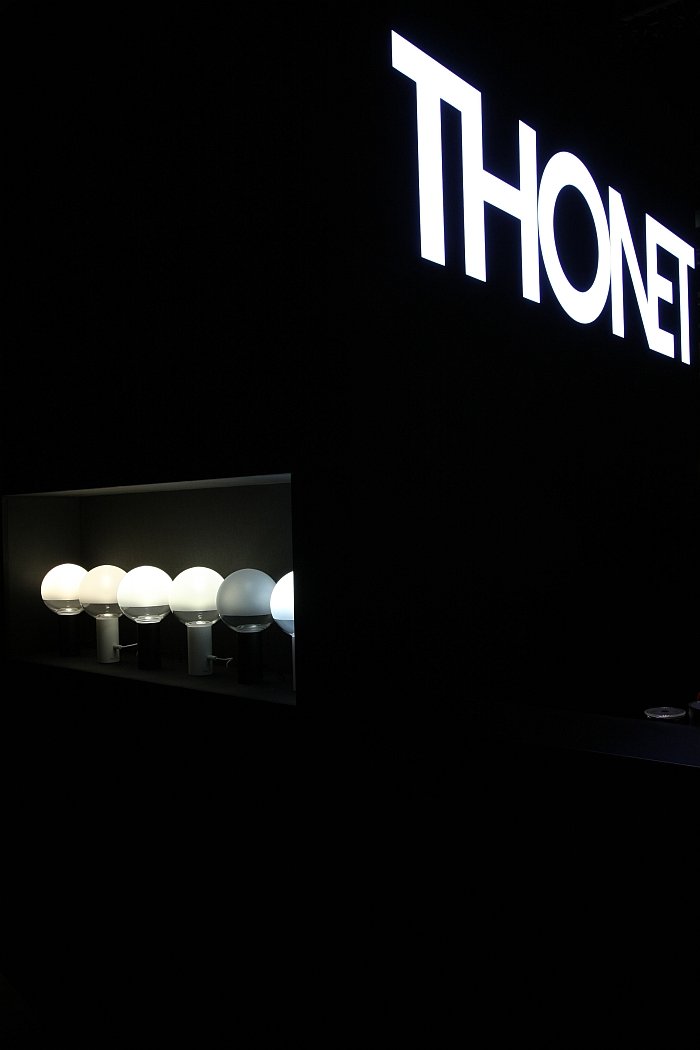
Taking its name from the Finnish word for ball/sphere, KUULA was developed in a cooperation between Thonet and the German lighting manufacturer Oligo - the former being responsible for the formal and aesthetic development the latter for the technical and functional, of which there is much contained within KUULA's unassuming form.
Aside from the aforementioned combined switch/cable inlet, which as well as contributing to the aesthetic appeal of the lamp is also a very refined and logical functional solution, and thus a further nod to the Bauhaus tradition, the LED light source is located in the foot of the lamp and is precisely focussed by an internal lens so that it that only illuminates the sand-blasted section of the shade, thus guaranteeing a glare free light. In addition KUULA comes in three different light temperatures - homely warm white, warm white or neutral white - thus allowing for a luminescence fitting for any room, be that living room, hallway, bedroom, wherever.
And certainly a very fitting lamp to accompany a B 9 and B 25.
Further details on KUULA, and Uli Budde's other projects, can be found at: http://ulibudde.com/
